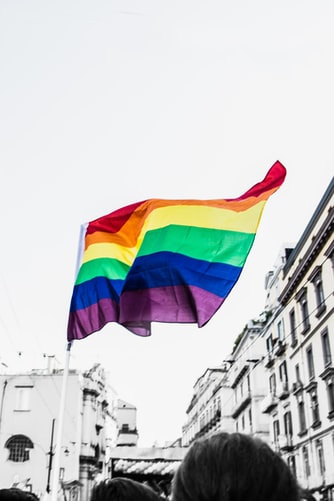What Workplaces Need to Understand About Pride Month

Written by: Ritushree
June is here, and the Rainbow flags are out. The world has started the celebration of Pride month. The time of the year when the LGBTQIA+ community celebrates who they are and the cisgender heterosexual allies celebrate their friends and family. But, amid all the showbiz and promotional events, sometimes the world forgets what pride month stands for.
What is Pride Month?
Pride Month is the month-long celebration of the one of the most marginalized, oppressed and historically discriminated groups of society. The community takes to the streets and cheers for those who are against the shame and stigma attached to them by society. The pride we take in our gender and sexuality.
But is it only about the celebration? It all started in Stonewall.
Post Second World War, USA turned into a more conservative society. The American Psychiatrist Association listed Homosexuality as a mental disorder. The law enforcement agencies started tracking down the LGBTQIA+ community members. Often, they would harass them and arrest them. This led to resistance of the community resulting in many riots of minor scales. One of the first instances was in 1959 the riot at the Cooper Do-nuts Cafe in Los Angeles against police harassment. In 1966, in San Francisco, when some of the community members were at Compton’s Cafeteria, the police arrived to arrest people according to the authority, appearing to be physically male dressed as women. A riot followed this discriminatory behaviour which marked the beginning of transgender activism in San Francisco.
In 1964, the city of New York was preparing to host the World Fair and to clean the city’s image. The then Mayor of the town, John Lindsey, ordered the shutting down of bars. The law enforcement agencies saw this as an excuse to harass and arrest people from the LGBTQIA+ community. The community protested but to no effect. That led the community to go underground in establishments owned and protected by members of the mafia. The underground ballroom culture flourished in the US.
Stonewall Riots
One such establishment was Stonewall Inn, a gay bar in the locality of Greenwich in New York owned by the Genovese Crime Family, a well-known American Mafia family active in New York and New Jersey city. The New York police used to raid the bar and harass the members frequently.
On June 28, 1969, at 1:20 a.m., the bar was live and happy, with attendees enjoying the night. Suddenly four plainclothes policemen in dark suits, two patrol officers in uniform and Detective Charles Smythe and Deputy Inspector Seymour Pine arrived at the Stonewall Inn’s double doors and announced that the police have taken over the place. The music was turned off, the site turned into an interrogation room for the approximately 205 people in the bar that night.
The procedure of such raids was to line up people, check their identification.
Furthermore, it was a routine for female police officers to take customers dressed as women to the bathroom to verify their sex. And finding someone dressed against their gender norms as per authority would be arrested. That night Transgender women, Crossdressers, Drag Queens etc. refused to go with the female officers. Others declined to produce their identification. They decided it is enough, and it is time to rise against the discrimination. The police officers arrested everyone and planned to take them to the police station. They separated those suspected of cross-dressing in a room in the back of the bar. Due to a shortage of vehicles and miscommunication, the process became a lengthy one. By the time police started pushing the people arrested into wagons, the bystanders and the LGBTQIA+ community members started cheering, shouting and singing in support of Pride. Soon a scuffle broke out between the police and the LGBTQIA+ community members, which took an ugly turn when police officials decided to use force to control the singing and sloganeering of the people. And then the nightmare happened. A riot broke out, and police tried to calm it down with brute force. The next day the entire Greenwich area was filled with graffiti of Queer Power. The riots continued for the next night, and slowly everything calmed down with each passing day. But it ignited the fire.
The names of Marsha P. Johnson, Joseph Ratanski and Sylvia Rivera became the symbol of resistance. The words of Marsh P. Johnson, “I want my rights” became the war cry for the community. That night at Stonewall Inn, a fire was ignited against the ages of discrimination. The Queer community told the world – Enough is enough. People across USA started rallying behind the Queer Rights Movement. On the first anniversary of the Stonewall riots, pride parades were organized. These were the first pride parades in the USA. The riots at Stonewall also changed something within the community. Earlier, every colour of the rainbow was fighting for its own. There was hierarchy and discrimination within. The incident of June 28 1969, broke all ceilings and brought everyone together.
Movement for Queer Liberation
The movement started, and pride parades became a thing for the world everywhere. The world of the LGBTQIA+ community became one. In the 1978 San Francisco Gay Freedom Day celebration, Gilbert Baker, an American artist and gay right activist, first designed the rainbow Pride flag. According to him, the flag was a “symbol of hope” and liberation. It was not a flag with an actual rainbow. In the original eight-colour version, pink stood for sexuality, red for life, orange for healing, yellow for the sun, green for nature, turquoise for art, indigo for harmony, and violet for spirit. After the first flag, the world witnessed pride flags for different sexuality and gender and unity flags. They all are different, but the message was Hope, Resilience, Unity, Freedom, and Pride.
Various cities were celebrating pride days differently, which they are still following. In 1994, a teacher at Mehlville High School in suburban St. Louis, Rodney Wilson, came out to his students as gay by comparing the pain of the members of the queer community to that of the Jews in Nazi Germany. He came up with the idea of celebrating Pride for a month and zeroed in on June because it was June 28, 1969. It all started with the Stonewall riots. Soon, the world began celebrating June as the Pride month, which continues to date.
Pride Month for Contemporary Times
During this month, the Queer community celebrates freedom of who they are. This includes pride parades, picnics, parties, workshops, movie festivals, seminars and concerts. But is it only for celebration? The queer community remembers and mourns during this month for those members of the community who lost their lives to hate crimes, discrimination, HIV/AIDS and resisting society for a better world. The sole purpose of pride month is to recognize the impact that the LGBTQIA+ community has had on society. To recognize the rights of the community, to say to the world loud and clear, “We are Queer, we are Here”. Yes, we have reclaimed the word historically used against the community in a derogatory way and made it something we take pride in!
Recently many organizations and corporations have started celebrating pride month, treating it as another Halloween. Pride Month is much more than a celebration. Pride month stands for resilience, remembrance and a promise to make the world a better place for the LGBTQIA+ community, a place where the rainbow can shine brighter than any star.
About the author: Ritushree is a transgender woman (she/her), corporate lawyer, D&I campaigner, LGBTQIA+ activist, and the Lead of Diversity and Inclusion at Ungender.
Ungender Insights is the product of our learning from advisory work at Ungender. Our team specializes in advising workplaces on workplace diversity and inclusion. Write to us at contact@ungender.in to understand how we can partner with your organization to build a more inclusive workplace.
Read our insights about diversity, legal updates and industry knowledge on workplace inclusion at Ungender Insights. Visit our Blog.
Sign up to stay up-to-date with our free e-mail newsletter.
The above insights are a product of our learning from our advisory work at Ungender. Our Team specialises in advising workplaces on gender centric laws.
or email us at contact@ungender.in




